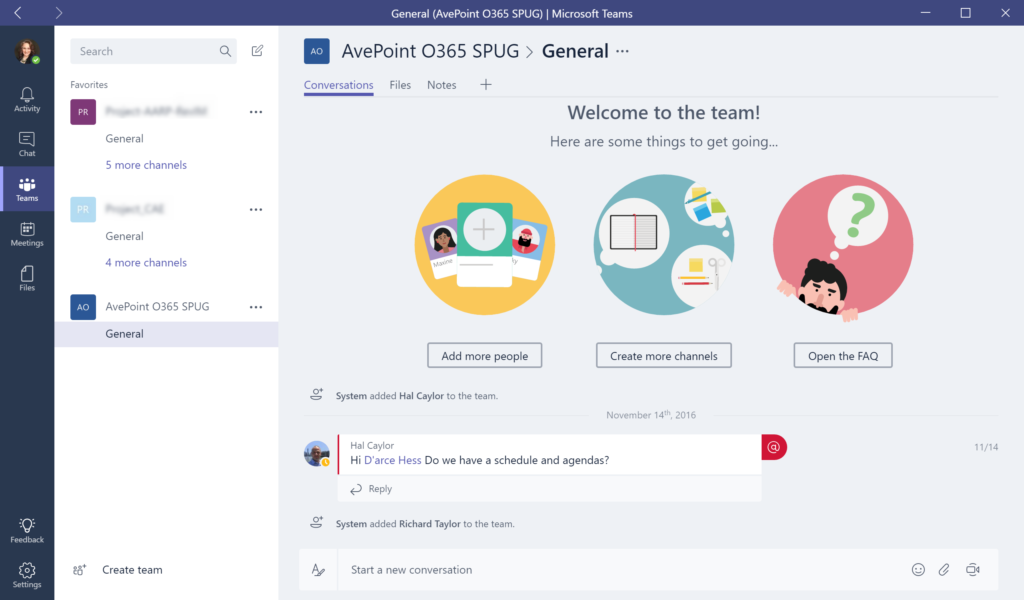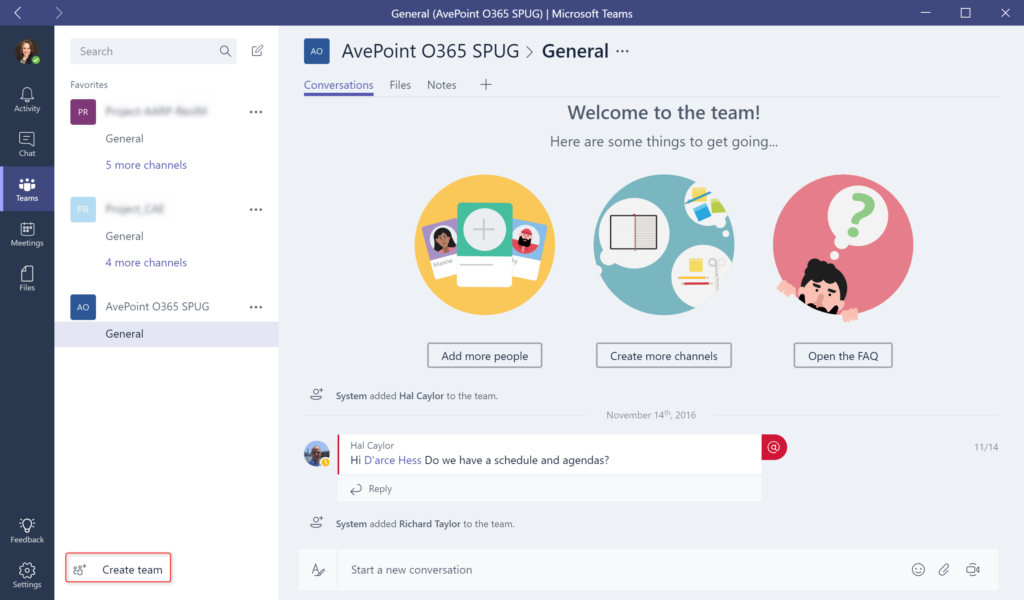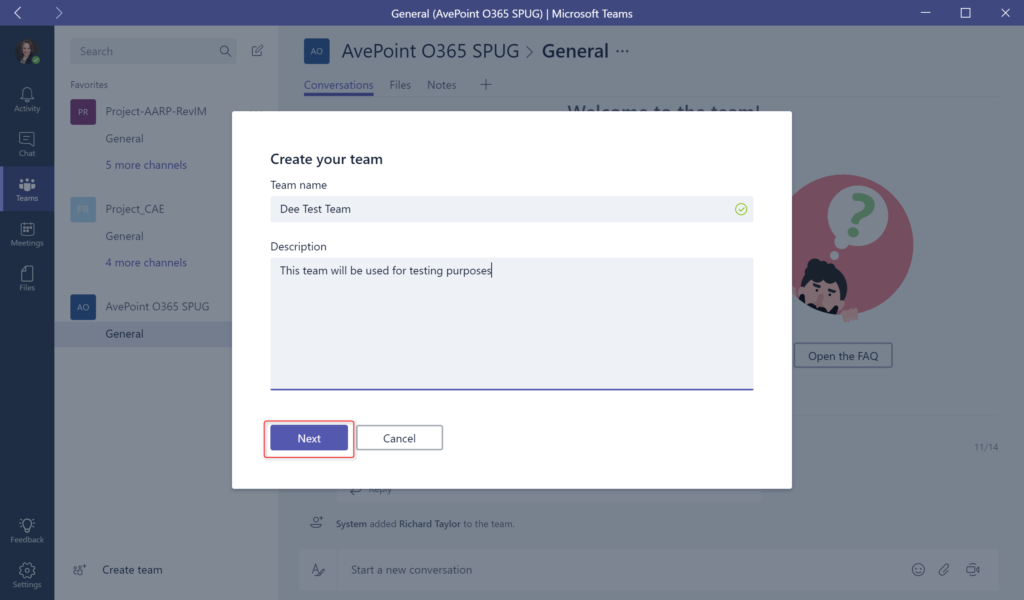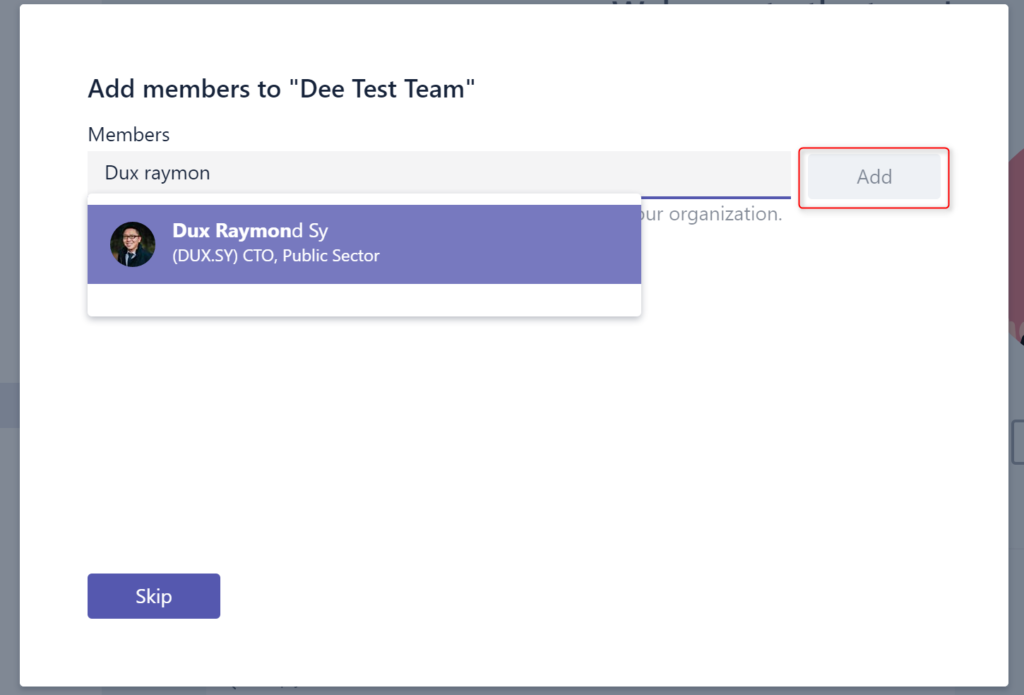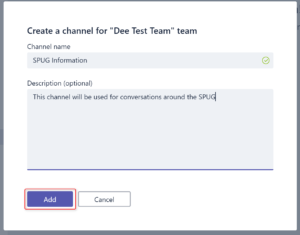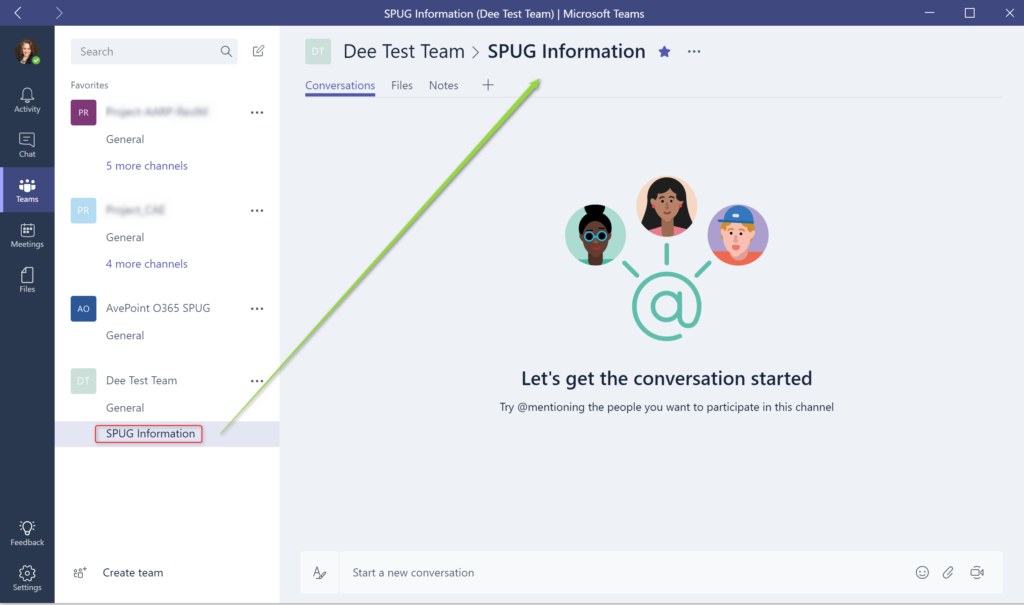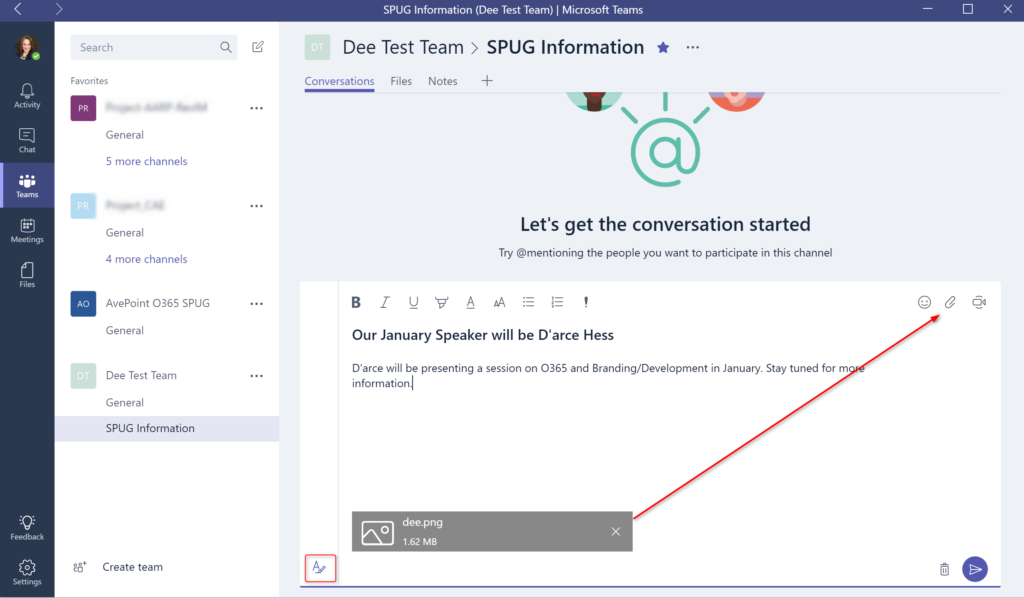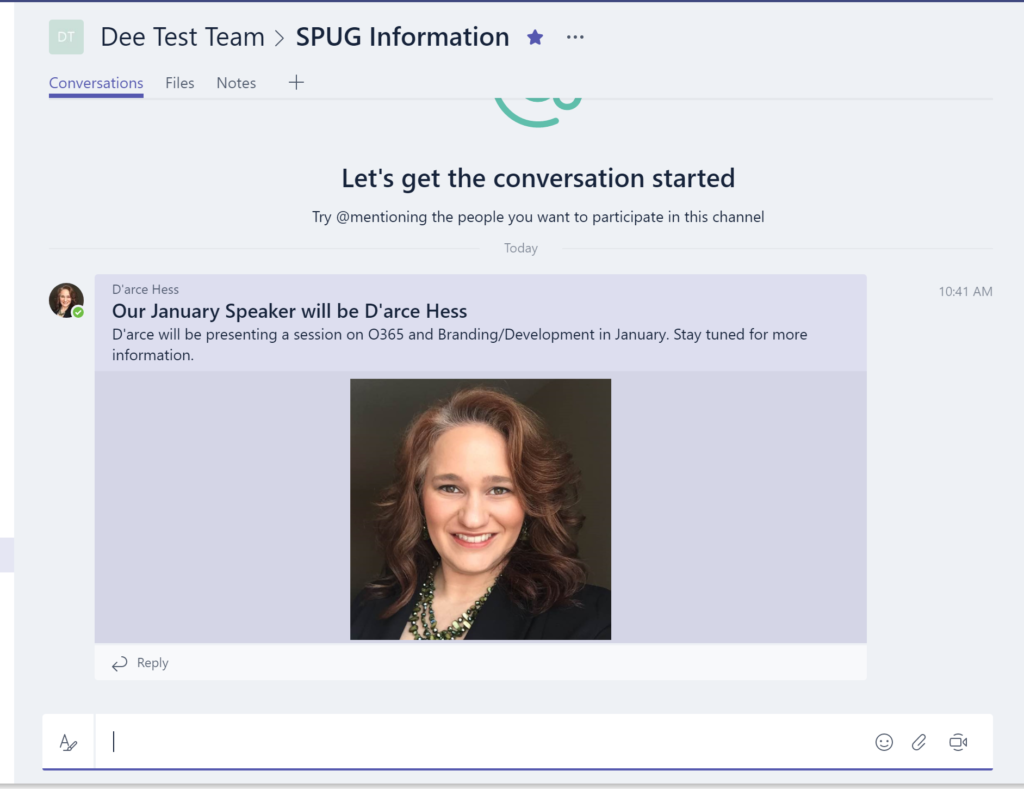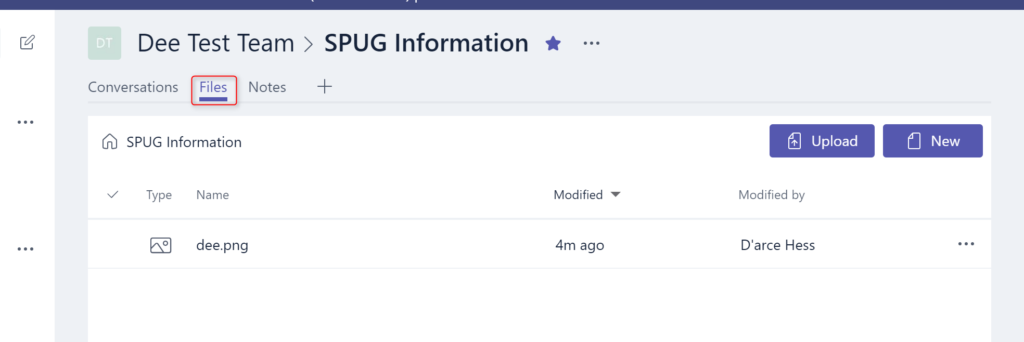Introducing Microsoft Teams
Microsoft has released into preview, Microsoft Teams, a new application focused at users currently using Slack for their business collaboration needs. To be used, your Administrator must enable Teams for your tenant.
For each Team that is created, an O365 Group will also be provisioned. All files will be stored in the group document library just as with other O365 Groups.
To create a new Team, click on the New Team icon in the left column
You must give the Team a name and a description
You can choose to add additional members to the Team. Start auto typing in the field and members from your organization will start to appear. The members are pulled from Active Directory.
Teams allows for Channels to be created. Channels are a great place for conversations or work-product from a specific department, team or topic to be placed with a specific audience.
There are three separate areas for a Team:
- Conversations
- Files
- Notes
These areas are pulled together through an O365 Group. The files are stored within a SharePoint Document Library.
With the creation of channels, team members can now separate content related to separate verticals within the team. For example, a project could have discussions happening around UI/UX, IA and Migration. The Team can set up a separate channel for each workstream and be able to segregate the content related to each section. Each channel allows for viewing by specific members.
The channel will now show as a sub-item of the Team
One of my personal favorite abilities is to be able in embed both documents and videos directly into a conversation that I am having.
To view the files that are related to your Team, click on the “Files” link at the top of the page. You can now choose to upload or create a new file directly from the interface.
With Teams now creating that perfect bridge between collaboration with team members and the simple interface, users can be excited about the future. With the continued ability to integrate with Skype for meetings as well as the new connectors, Teams will only continue to grow.

